Cocos Nucifera
Cocos Nucifera
Rated 4.9 ⭐ by 100 satisfied customers on Google
Out of stock
Couldn't load pickup availability
- Home delivery throughout Belgium.
- Collection in Leuven possible
- Tropical gem for the living room
- lifelong help for all your plant questions.
The Cocos Nucifera, better known as the coconut palm, instantly brings an exotic ambiance to your home. With its slender trunk and lush green leaves, it's the ultimate eye-catcher for anyone looking to transform their living room or conservatory into a tropical paradise. Even as a novice plant lover, you'll be enjoying a healthy Cocos Nucifera in no time thanks to the helpful care tips below.
How to care for a Cocos Nucifera
Watering Cocos Nucifera
Water your Cocos Nucifera regularly, but avoid allowing the roots to sit in constantly wet soil. A good rule of thumb is to let the top layer of potting soil dry out slightly between waterings. This encourages a strong root system and prevents root rot, which you can read more about in our blog post about what to do about root rot.
Light requirements of Cocos Nucifera
Cocos Nucifera loves plenty of light, preferably indirect sunlight. Place your coconut palm near an east- or west-facing window so the leaves absorb enough energy without burning. If there's too little light, the plant will grow slowly and the trunk will remain narrow, so find a bright spot or combine it with a grow light from our collection of pots and accessories.
Frequent problems
Yellow leaves
Yellow leaves often indicate overwatering or a nutrient deficiency. First, check the potting soil for proper drainage and replace it with fresh 5L of potting soil if necessary. Water only when the top layer is slightly dry, and feed the plant with a liquid all-purpose fertilizer during the growing season.
Plant drips
If your Cocos Nucifera is releasing droplets, it likely needs high humidity. In a dry room, you can increase humidity with a jungle mist spray or a humidifier. Also, place the pot on a saucer with hydro grains to gradually release moisture.
Plagues
Whiteflies, spider mites, or scale insects can attack the leaf blades of your coconut palm. Inspect the underside of the leaves weekly and treat them with an organic plant spray or sticky traps to repel fungus gnats. Don't stress your Cocos Nucifera and remove affected leaves promptly to prevent the spread.
Carrots come out of the bottom of the pot
When roots grow out the bottom of the pot, it's time to repot. Choose a slightly larger pot from our collection of flower pots for sale in Leuven and use fresh, well-draining potting soil for aroids. This will give the Cocos Nucifera room to grow and prevent root bottlenecks.
Brown edges on the leaf margins
Brown edges can indicate overly dry air or too much direct sunlight. Move your Cocos Nucifera a little further away from the window or screen out bright sunlight with a translucent curtain. Increase the humidity around the plant by misting regularly or using a humidifier, as recommended in our blog post about 5 tips for increasing humidity.
Frequently Asked Questions
Is the Cocos Nucifera poisonous?
The coconut palm is non-toxic to humans or pets, making it ideal for families with children or cats and dogs. So you don't have to worry about your four-legged friend getting sick after nibbling on a leaf. For an overview of non-toxic plants, read our selection in the category "non-toxic houseplants safe for pets."
Different types of palms
Discover some related tropical houseplants that are just as exotic as the Cocos Nucifera:
- Areca Palm (Gold Palm)
- Beaucarnea recurvata (Elephant Spot)
- Cycas revoluta (Sago palm)
- Yucca elephantipes
- Chamaedorea elegans (Mountain Palm)
- Phoenix roebelini (dwarf date palm)
- Brahea armata (Blue palm)
Looking to expand your collection? Also check out the Monstera deliciosa for larger leaves or the Aglaonema silver bay for subtle leaf markings. Feel free to browse our Dracaena marginata for slender silhouettes and our Pots for Houseplants for stylish displays.
Share
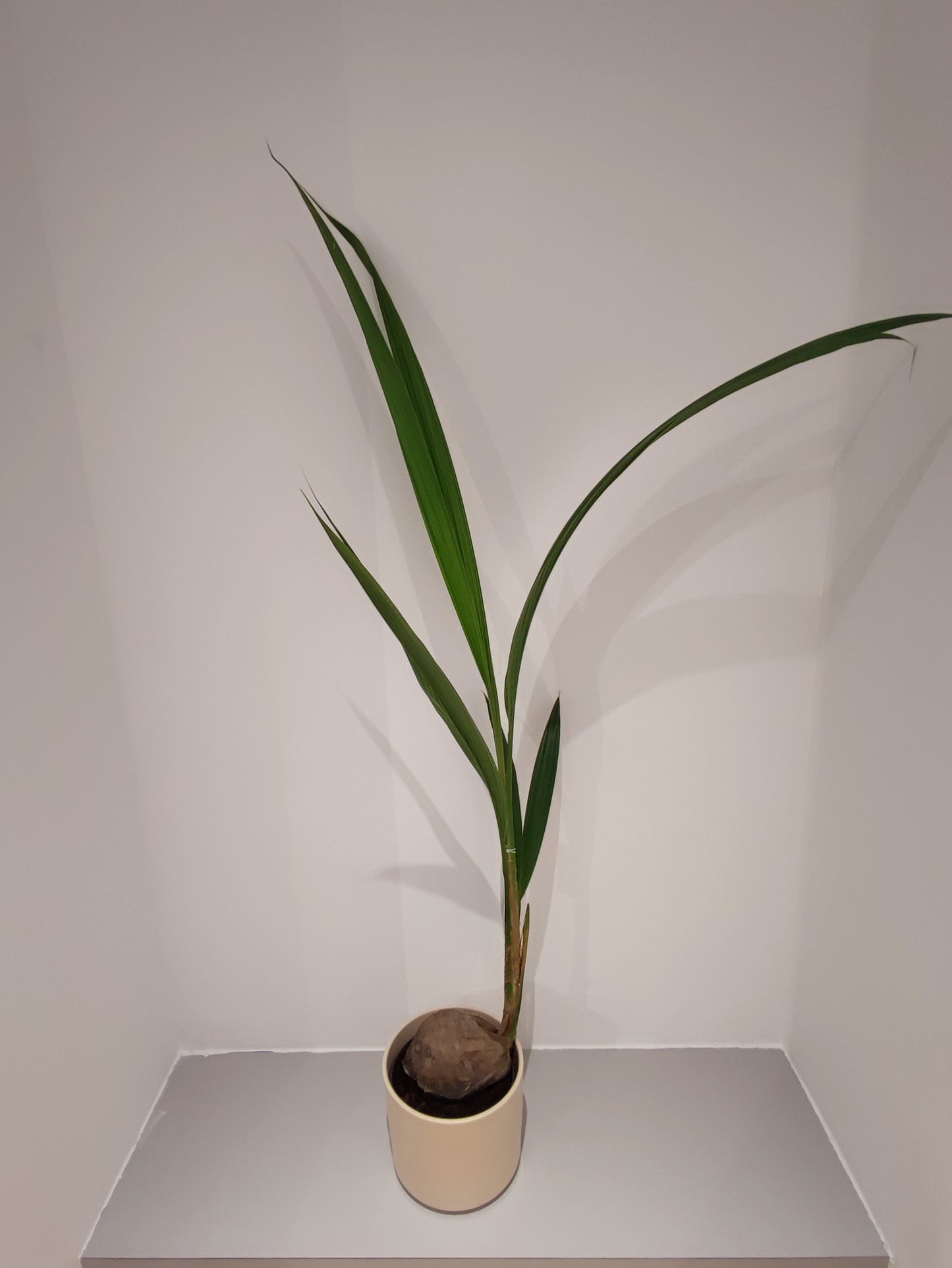
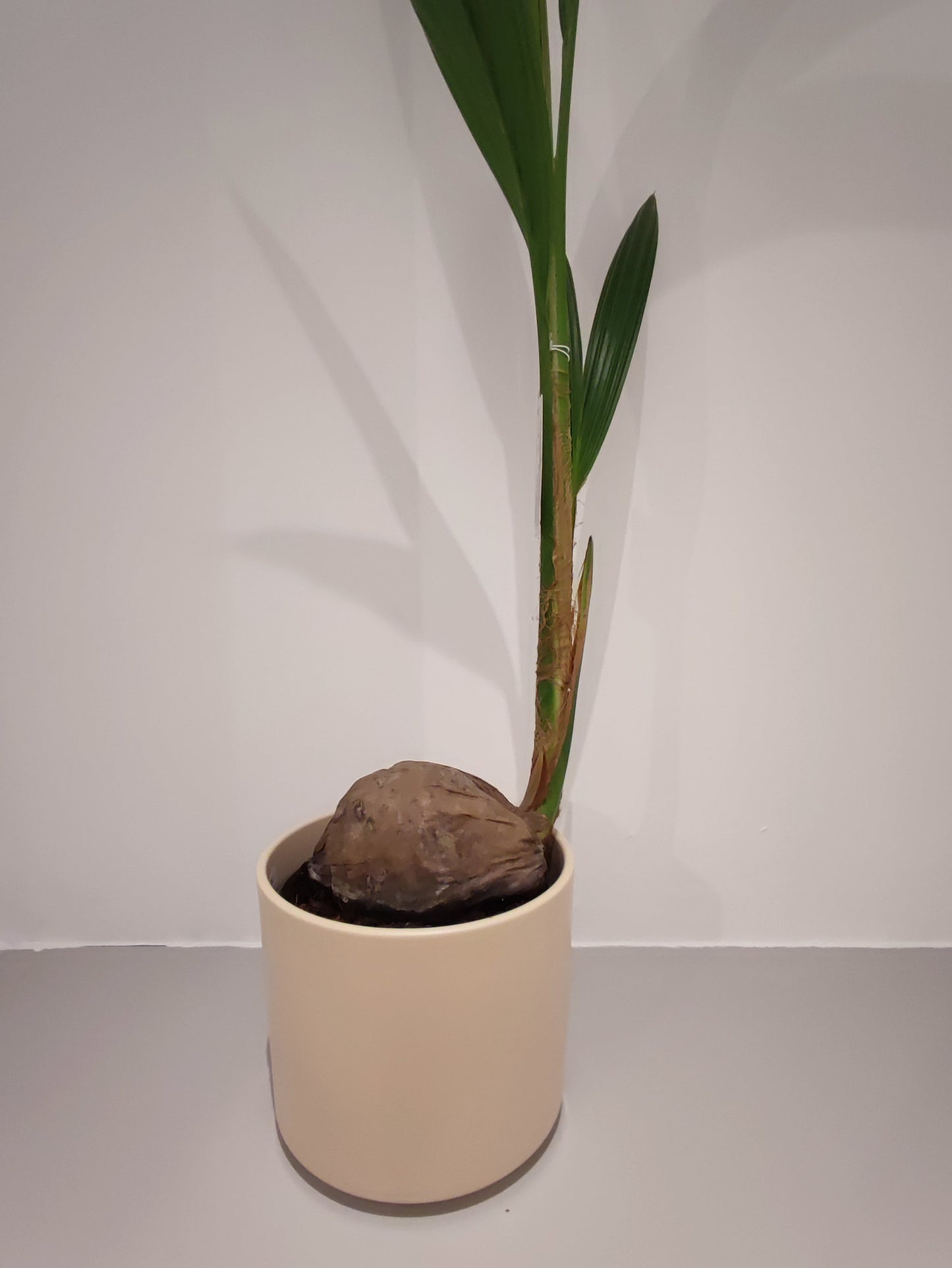
Frequently Asked Questions
How do you ship plants?
We always ship our plants well packaged and safely.
We do not ship on cold days and we also try not to ship during the weekends. This way plants are always in suboptimal conditions for a minimum time.
What is your shipping policy?
You can read our shipping policy here.
What payment methods do you accept?
We accept various payment methods online such as Bancontact, Visa, Mastercard, Paypal.
You can also pay with Ecocheques in our store in Leuven.
Can I return the products?
You can read our returns policy here.
Where do your plants come from?
Our plants always come straight from the grower to our shop. With minimal stops we prevent pests and diseases and keep the chain short!
Collections
-
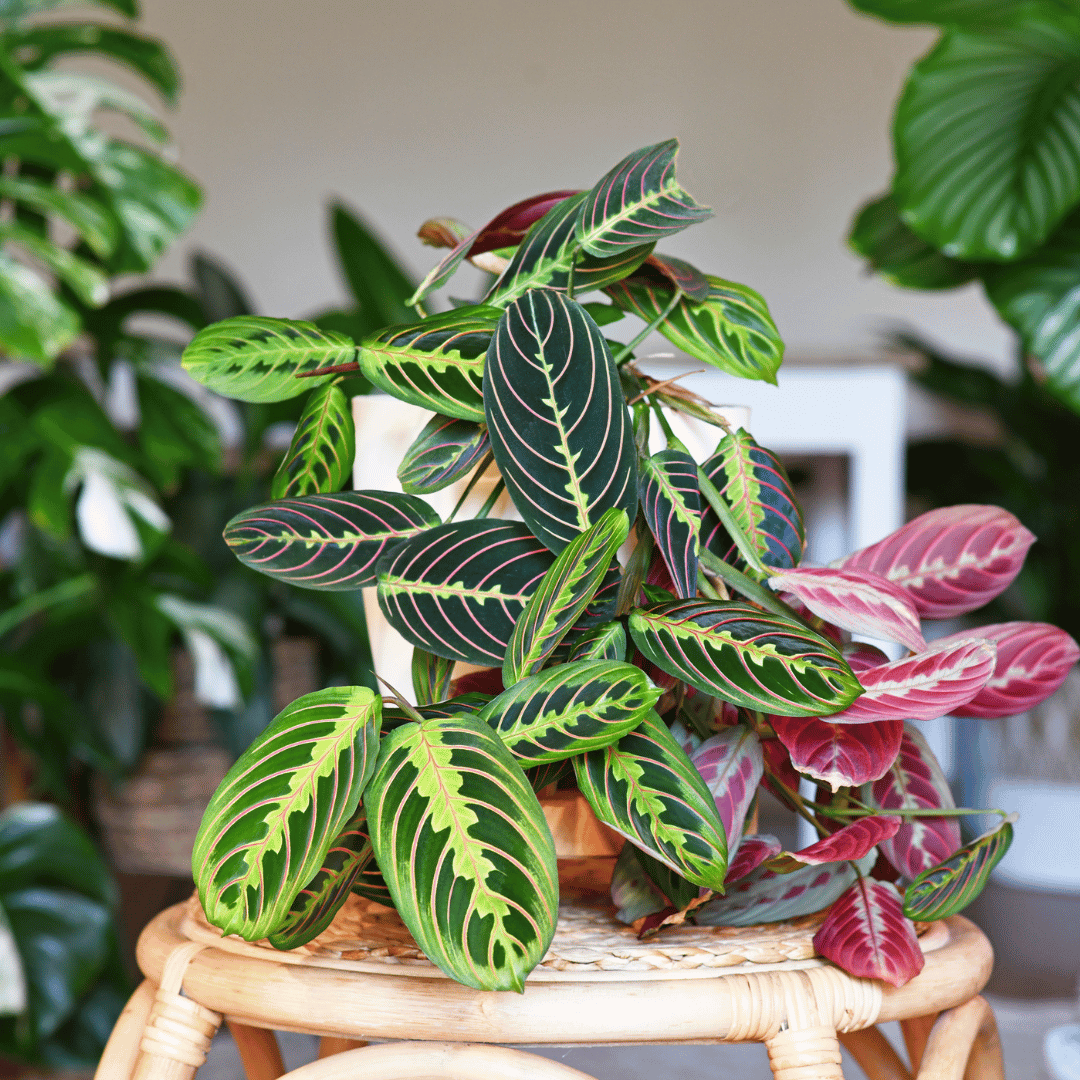
Buy Maranta's
Discover the unique charm of our collection of Maranta plants. With their...
-
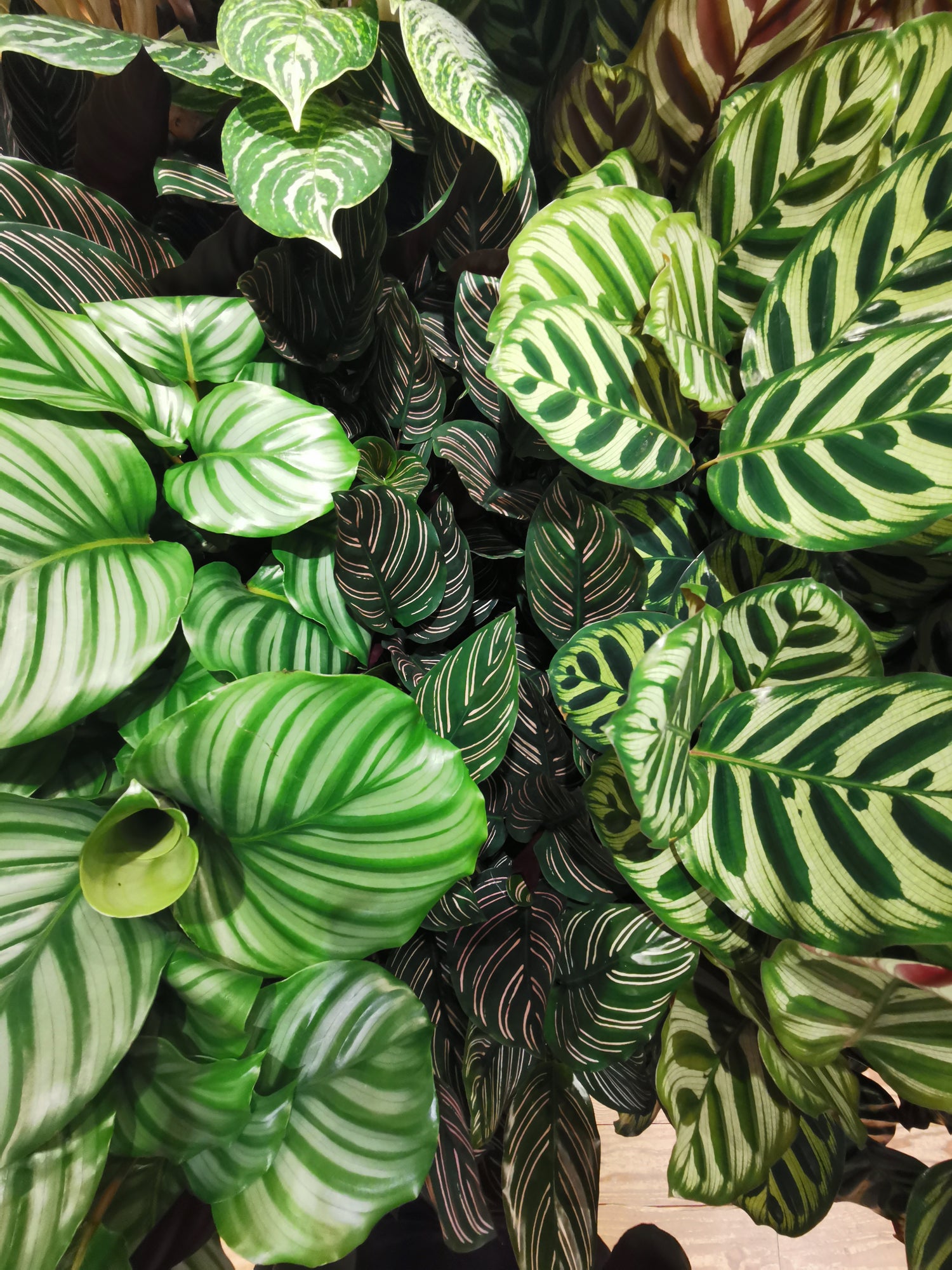
Buy Calathea
Are you looking for a beautiful and unique houseplant that will purify...
-
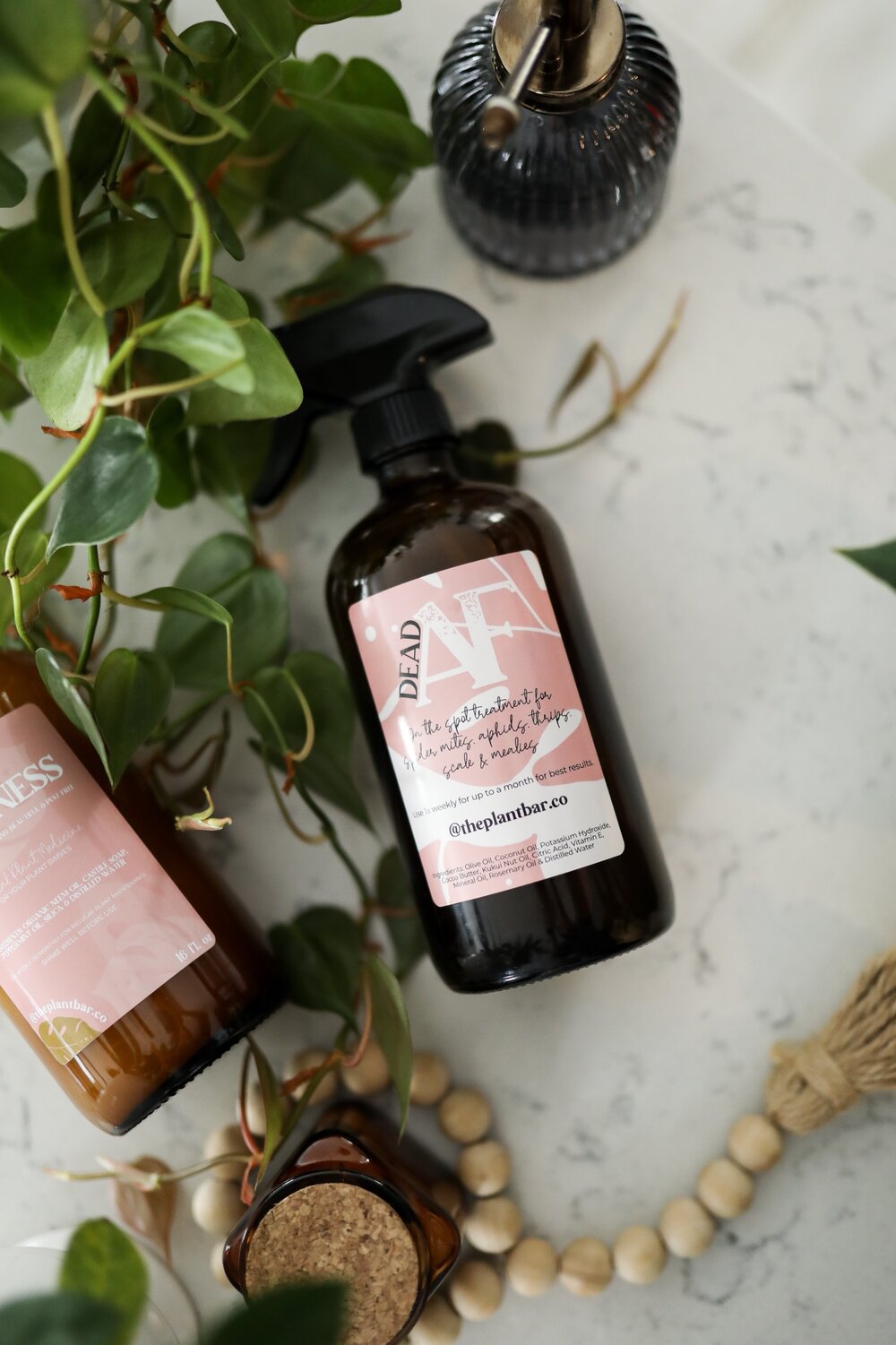
Accessories for Plant Lovers
In our store we have a wide variety of accessories to help...





